Building
What Knot To Do
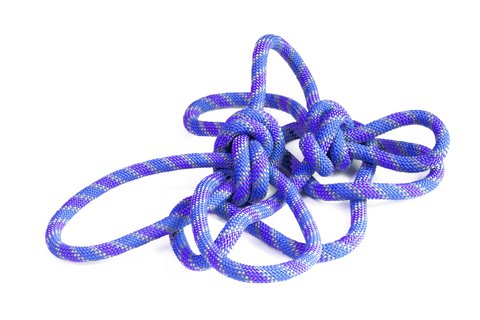
Knot tying has always been one of those key outdoor skills that even the most experienced survivalist’s often take for granted. Any time outdoors can often show you just how much your success or failure can depend on your ability to tie a decent knot
A good knot can save lives when you’re dealing with a survival situation, performing first aid, and when working over heights or water. But, you have to know how to tie it correctly. Below I have listed a few very basic knots that are extremely helpful to know regardless of if you are in a life or death survival situation or simply pitching a tent on a family camping trip.
Square (Reef) Knot
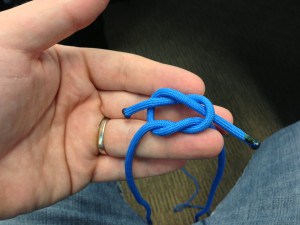
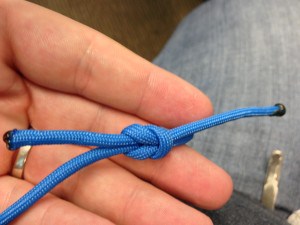
This Knot is a classic for connecting lines and tying knots and is often the first knot taught in cub scouts or boy scouts. Whether you are tying two ropes together to make a longer rope, or you are securing up a bundle of firewood to carry, the Square Knot is a timeless and easy knot for the job.
While this knot is as ancient as they come, it was coined as the reef knot in the late 1700’s by sailors and used in the reefing and furling of sails.
When made with cloth the knot lies very flat and for this reason it has been used in the tying of bandages for millennia. As a binding knot it was known to ancient Greeks as the Hercules knot and is still used extensively in medicine.
It has also been used since ancient times to tie belts and sashes. A modern use in this manner includes tying the obi (or belt) of a martial arts keikogi(uniform).
How to Tie: Square knots are extremely simple to tie. You can tie a solid square knot by lapping right over left, and then tying again in the reverse direction (you will essentially create two entwined loops) See the example below:
Bowline
The Bowline creates a loop at the end of a rope that cannot shrink or expand. The bowline is well known as a rescue knot for such purposes as rescuing people who might have fallen down a hole, or off a cliff onto a ledge. They would put it around themselves and sit on the loop. This makes it easy to heft them up away from danger. This knot is often taught using the story of the rabbit coming out of the hole, in front of the tree, going behind the tree, and back down his original hole.
How to Tie: Form a loop on top of the long end of the line. Pass the free end of the line through the loop and around behind the line. Bring the free end down in the original loop, while maintaining the secondary loop which becomes your Bowline loop. Once the “rabbit” is back down his hole, pull the “tree” up and the Bowline is tightened.
Figure 8
The Figure 8 makes a stopper knot at the end of a line, and it’s necessary to use this knot in order to tie several other more complex knots. This knot is crucial for keeping a line from slipping completely away and even though it may jam when pulled tight, it is typically quick and easy to untie.
How to Tie: To tie a Figure 8 simply pass the free end of a line over itself to form a loop. Continue under and around the line’s end, and finish the knot by passing the free end down through the loop
Sheet Bend
Nothing works better for tying different types of material together and joining different thicknesses of rope. This knot even joins together lines or materials that normally couldn’t be joined together.
This is a crucial knot in a survival situation as you often will not have enough of one length of rope and may need to tie multiple lengths together.
With enough time and material this knot can also be used to create nets for catching fish. It is so essential that the Ashley Book of Knots lists the sheet bend as knot # 1.
How to Tie: With the sheet bend, you bend the thicker or more slippery rope into a “j” shape (like a fish hook). You then pass the other rope through the fish hook from behind, wrap around the entire fishhook once and then tuck the smaller line under itself.
Taut Line Hitch
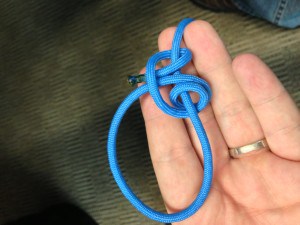
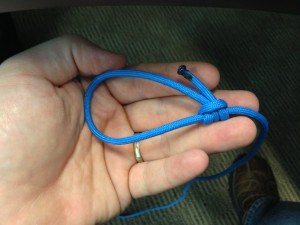
The Taut Line Hitch takes the place of a slide to tension or loosen a loop in a line (like a tent guy line). This knot grips well, as long as there is tension on the “taut” side of the loop. If the tension is released from the line the knot can quickly slip. Once snug and set, the hitch can be adjusted as needed.
To tighten the line with respect to a load attached to the standing part, grasp the standing part with one hand inside of the loop and pull towards the anchor object. Grasp the hitch with the other hand and as slack develops within the loop slide the hitch away from the anchor object, taking up the slack and enlarging the loop. To loosen, slide the hitch toward the anchor object, making the loop smaller and lengthening the standing portion.
How to Tie: Create a loop by wrapping around something like a tree or tent stake. With the free end of the rope, wrap towards the stake twice. Then wrap the free end of the rope over everything, towards you one time around the rope and cinch these wraps down tight. Pull on the standing line and the Taut Line Hitch should grip the loaded line.
These are just five knots that I find essential. I know I left many knots out and there are literally thousands of knots, each having different variations and uses. What knot would you consider the most important in a survival situation?
P.S. To learn more knots than I could ever hope to teach you check out the Ashley Book of Knots by clicking here. This book is a bit pricey for me so I would recommend checking the library for it first. This book contains over 4000 knots and is considered by many to be the bible of knot tying.
Also, if you want something that you can keep in your pack to help you just in case you ever forget how to tie a certain knot or what one of them is used for, Proknots makes an outdoor knots flashcard set that contains the 17 different crucial knots that you may need. This nifty gadget comes in at around $5.00 on amazon. Click here to check it out.
How to Tie A Square Knot | Instructions
How To Tie A Fishing Knot
40 Essential Knots Every Survivalist Needs to Know
-

 Do It Yourself7 months ago
Do It Yourself7 months agoParacord Projects | 36 Cool Paracord Ideas For Your Paracord Survival Projects
-

 Do It Yourself9 months ago
Do It Yourself9 months agoHow To Make Paracord Survival Bracelets | DIY Survival Prepping
-

 Do It Yourself9 months ago
Do It Yourself9 months ago21 Home Remedies For Toothache Pain Relief
-

 Do It Yourself10 months ago
Do It Yourself10 months agoSurvival DIY: How To Melt Aluminum Cans For Casting
-

 Exports8 months ago
Exports8 months agoAre Switchblades Legal? Knife Laws By State


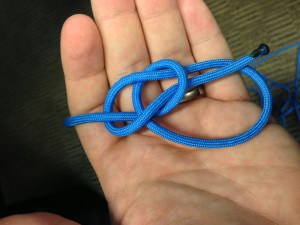
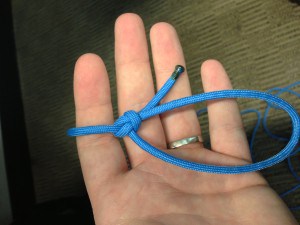
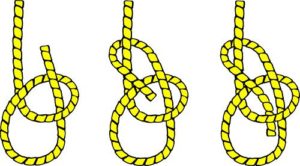
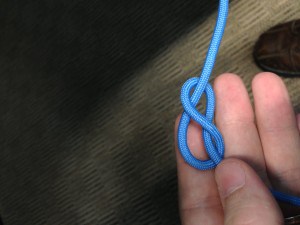
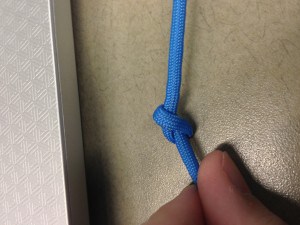
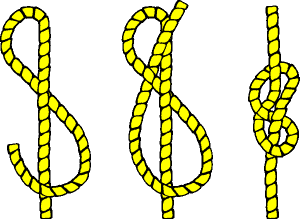
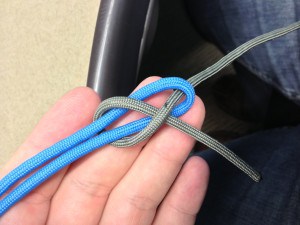
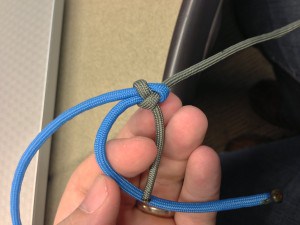
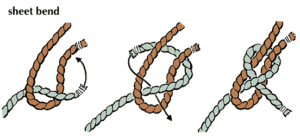
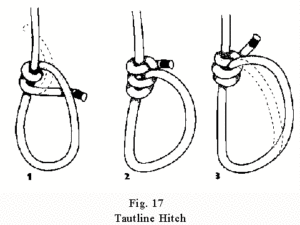
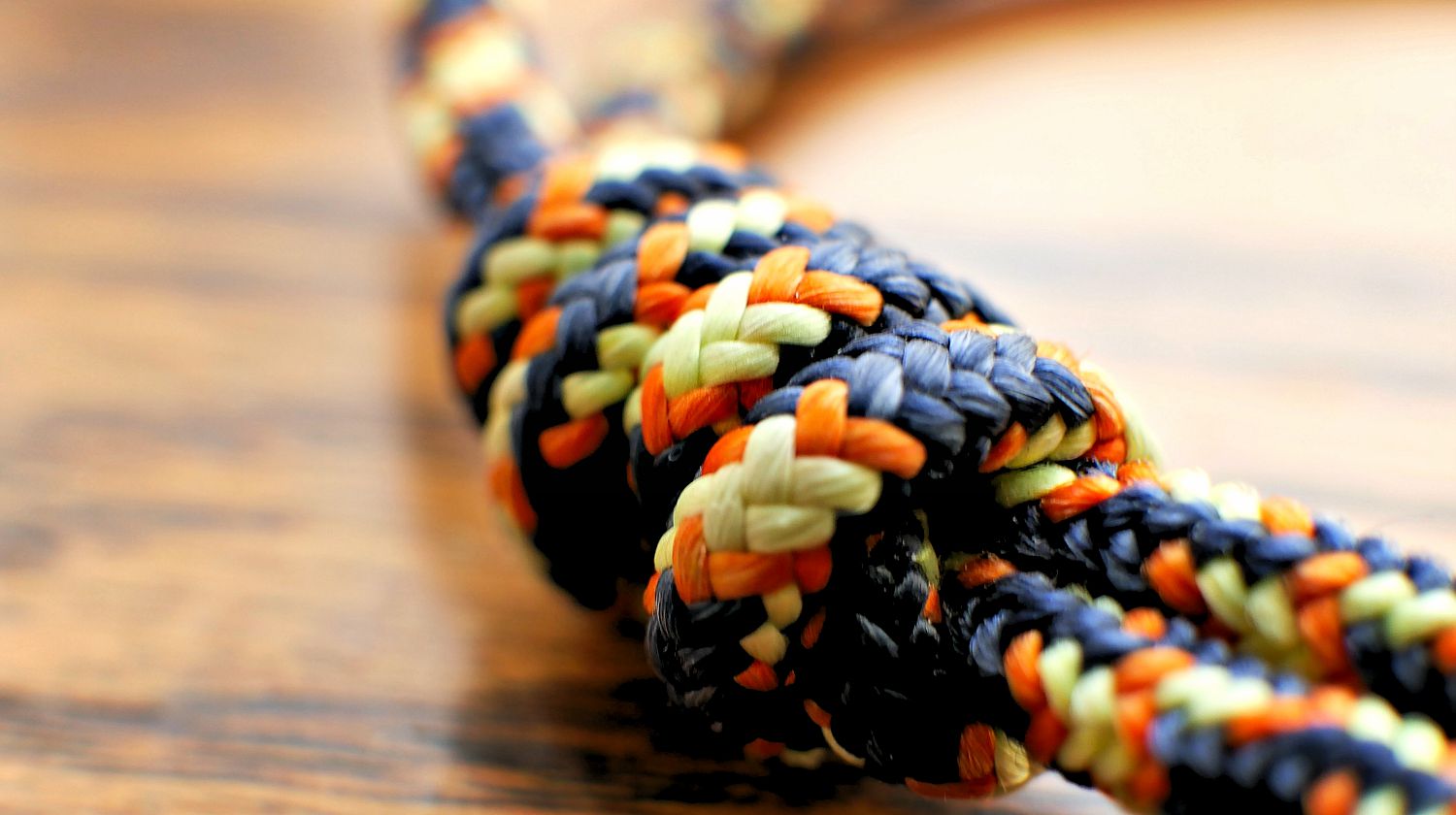
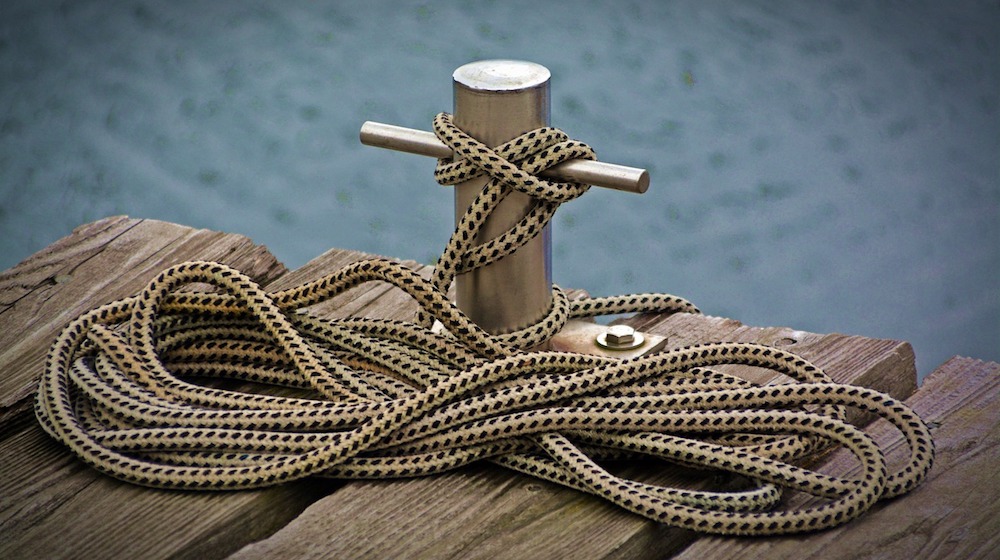

Greg
November 8, 2012 at 12:21 PM
I went through Cub Scouts & Boy Scouts with my son, as a leader. Knots were a big part of the outdoor training. Once you learn this it is wild how oftern you will use it in regular life, whether you are camping or tying down a load in a pick-up truck.
Dan
November 8, 2012 at 1:04 PM
I would only add on other knot and that is a true slip knot. I can see that practicing these knots till they are second nature is something I need to add to my monthly preps.
Don Burnette
November 8, 2012 at 1:13 PM
Enjoyed your article, it just refreshed my knowledge of knots that I learned when I was in Boy Scouts!
duggy dugg
November 8, 2012 at 2:04 PM
the taut line hitch is similar to what we used in tree trimming.. put the rope over the crotch from which you intend to swing. ..secure it around the long part and slip the knot downward as you need to descend..your belt is attached to the loop part and maintains the tension
Lee Danforth
November 8, 2012 at 3:30 PM
Excellent primer on knots. The bowline is probably the most useful and least known and understood. It is the only know to use when tieing a lead rope around an animal’s (horse, dog, cow, llama, etc.) neck or foot. It will not slip and choke them, and it is one of the easiest to undo.
G.S.
November 8, 2012 at 8:56 PM
While I was in college ROTC, we used the taut-line (we called it a Prussic knot) and the bowline when training for water crossings. A bowline would be tied on the near bank around a tree, a volunteer would use the free end to tie a bowline around himself, then swim/walk across the river, untie himself, tie a taut-line around a far bank tree and pull it tight. The main body would then cross the rope one at a time, adjusting the taut-line knot as needed. The last person would untie the bowline from the near bank tree and tie it around themselves. The main body would then pull him across, untie everything and away we go!
Mike
November 12, 2012 at 11:58 PM
The taut-line hitch only has three turns, two on one side and one on the other, while the Prussic knot has four turns, two on each side. They are two separate knots. Also, the Prussic knot is usually tied to a piece of rope with a separate piece of rope, that is unless you’re making “Purssic handcuffs”.
Hank Bondurant
November 8, 2012 at 10:15 PM
I have been teaching scouting now for 31 years and was in a Fire Dept and Rescue for part of those years. To dirve my scouts nuts, I can tie a bowliine behind my back in 4.8 Seconds. I can tie all of the 12 common knots in the Boy Scout Handbook in a total time of 53 seconds. Every one should know these knots. It can save a life!!!!
LiberalPrepper
November 9, 2012 at 1:55 AM
While it’s not technically knotting, knowing how to splice is very handy. I keep a piece of rope in my car that has an eye splice on one end and a back splice on the other. Always useful for tying boards to the top rack to haul home!
Herb Wyatt
November 9, 2012 at 3:13 AM
I worked once with a WWII Navy vet. I asked him to show me some knots. He picked up a piece of rope, wipped it over his arm and asked, ” You know what that is ?” “Half hitch” I said. He quickly made another wrap around his arm,pulled it tight and said, ” What about this one ?” “Slip knot ?” I said. He pulled the rope off his arm, tossed it to me and said, That’s all you need to know. With a slip knot and enough half hitches you can hold anything.” He was not far from right.
I use a bowline more than any other knot. I agree with Dan about a slip knot. Very useful if un-tieing is not critical, just use the handy figure eight on the end or maybe add a good ole’ half hitch. It should be on the list near the top. Maybe a purist would not classify it as a true knot, but a half hitch ( or enough of them )really can hold about anything
Pete Hoyle
November 9, 2012 at 3:26 AM
Excellent. Well done. A handfull of good usefull knots. Again well done.
I wish you would have added a few more knotts. Like the timber hitch, very useful for tying stickes or logs together ( the boy scouts used it in their pioneering skills). An other knott would be the diamond hitch, used extensfully in horse packing, and if needed in bike packing, man packing,etc. There is another knott I’ve used in tying down loads. I don’t know the name of it but, basically grab some of the line and double it over, so you are holding a loop. Take the loop and pull under, then over then down the hole (just a simple over-hand knott) so that you have a non-movable loop in the line. Throw the line over the load and thru the tye off point then do it again, so that on one side of the load the line is attached and has a loop, and on the other side of the load the line is thru and around the tye off point and another loop. Take the line over the load and thru the first loop, then back over the load and thru the second loop then back over the load to the first tye off point. As you tighen on the line the loops act like hoist pulleys and you can pull the line much tighter.
James NZ
November 9, 2012 at 8:24 PM
I think the knot you are describing is a truckers hitch, very useful for tensioning a line so you can effectivly tighten it twice youe own body weight
MI Patriot
November 9, 2012 at 4:21 AM
When I taught our son to tie basic knots, I taught him the little ditty that goes along with tying a square knot. Right over left and left over right makes a knot tidy and tight.
Charles A
November 9, 2012 at 4:39 AM
I have used all of these knots except the Taut Line Hitch. This is the first time I have seen it. I can see it’s value, and I probably could have used it at one time or another. Thanks for showing it.
Mike
November 13, 2012 at 12:05 AM
The taut-line hitch was used frequently on tent ropes before they started making those little plastic or metal figure 8 looking things you see these days. It’s still a good knot to know because those things break at the worst possible time.
Mike
November 12, 2012 at 11:47 PM
These are all very useful knots but, I can think of several others that would come in handy if you ever found yourself in a survival situation. The clove hitch and the girth hitch are two I think should have been included for sure. Also, it should be mentioned that adding a half hitch at the end of any knot will give you that little bit of extra security when you can’t afford for your knot to come untied. Just my $0.02
Joe
November 13, 2012 at 2:33 PM
Thanks for that mike, the clove hitch is extremely useful, I was hoping that some one would mention it 🙂
Prabhakar
June 8, 2013 at 3:18 PM
I did the same basic thing with crochet cttoon size 10 (rainbow!!) and I single crocheted around the cord. It has a line of knots up the side, but I still really like it. The cttoon has a very fast repeat of rainbow, which looks great. The single crochet also will never come unraveled, save for if you don’t weave the ends back through. It helps a great deal with the cord becoming tangled in my pocket. I love this craft!!
Guy Olsen
February 13, 2013 at 7:39 PM
Great article. One point: in the section for the taut line hitch, the illustration (“fig. 17”) is correct. However, the photograph is not correct and does not match the illustration. In the photo, the final half-hitch is reversed. It should wrap the same direction as the first hitch (the one with the extra turn). Compare the two closely and you’ll see what I mean.
I got “gigged” on that in a knot-tying contest, and I indignantly looked it up in several knot books. That’s why it sticks in my head now!
Pingback: How to Tie the Best Knots for Camping and Survival | Survival Life
Pingback: How to Tie a Fishing Knot - 7 You Should Learn from Survival Life
Pingback: 14 Bushcraft Survival Skills You Need To Know - Prepared Survivalist
Pingback: How To Build An Overnight Bushcraft Camp | Tutorial For DIY Survival
Pingback: How To Build An Overnight Bushcraft Camp - Survive!
Pingback: Obscure Bushcraft Skills You Should Know | Survival Life
Pingback: 25 Obscure Bushcraft Skills For Survival | Primitive technology
Pingback: 25 Obscure Bushcraft Skills For Survival – Ultimate Survival Alerts
Pingback: How To Tie A Square Knot – surviveurself
Pingback: How To Tie A Square Knot -